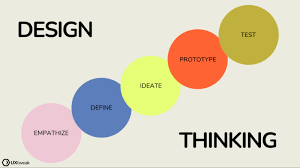Design thinking, a human-centered approach to problem-solving, has gained significant traction in recent years. Lewrick's contributions to this field have been invaluable, providing a framework and tools to guide businesses towards innovation and growth. This white paper aims to delve into Lewrick's design thinking tools and explore how they can be applied to drive business success.
Design Thinking Tools and Business Growth: A Comprehensive Exploration
Introduction
Design thinking, a human-centered approach to problem-solving, has gained significant traction in recent years. Lewrick's contributions to this field have been invaluable, providing a framework and tools to guide businesses towards innovation and growth. This white paper aims to delve into Lewrick's design thinking tools and explore how they can be applied to drive business success.
Lewrick's Design Thinking Tools
Lewrick's design thinking tools offer a structured approach to problem-solving, encouraging empathy, creativity, and experimentation. Key tools include:
- Empathy Maps: These tools help teams understand users' thoughts, feelings, actions, and pain points. By gaining insights into the target audience, businesses can develop solutions that truly resonate.
- Customer Journey Maps: By visualizing the customer's experience from start to finish, teams can identify opportunities for improvement and create more seamless interactions.
- How Might We Questions: This technique encourages open-ended thinking and helps teams generate a wide range of potential solutions.
- Ideation Techniques: Lewrick introduces various ideation methods, such as brainstorming, mind mapping, and SCAMPER, to stimulate creativity and generate innovative ideas.
- Prototyping and Testing: Rapid prototyping allows teams to test ideas early in the development process, gathering feedback and making necessary adjustments before investing significant resources.
Design Thinking for Business Growth
Design thinking can be a powerful catalyst for business growth by:
- Improving Customer Satisfaction: By understanding customer needs and preferences, businesses can create products and services that exceed expectations, leading to increased customer loyalty and satisfaction.
- Driving Innovation: Design thinking fosters a culture of creativity and experimentation, enabling businesses to develop innovative solutions that differentiate them from competitors.
- Enhancing Decision-Making: By incorporating user insights and empathy into the decision-making process, businesses can make more informed and effective choices.
- Strengthening Organizational Culture: Design thinking can foster a collaborative and human-centered work environment, empowering employees and improving overall organizational performance.
Case Studies
To illustrate the practical application of design thinking tools and their impact on business growth, let's examine a few case studies:
- Case Study 1: Airbnb
- Airbnb leveraged design thinking to understand the needs of travelers and homeowners, leading to the creation of a disruptive platform that revolutionized the hospitality industry.
- Case Study 2: IDEO
- IDEO, a renowned design firm, consistently employs design thinking to solve complex problems for clients across various industries, demonstrating its effectiveness in driving innovation and business success.
References
- Lewrick, Ulrich, Thomas Bundek, and Klaus Dieter Ernst. Design Thinking: A Handbook for Managers. Springer, 2011.
- Brown, Tim. Change by Design: The Transformative Power of Design Thinking. Harper Business, 2009.
- Norton, Paul. Designing for Innovation: How to Use Design Thinking to Create Breakthrough Products and Services. Wiley, 2014.
- Airbnb: https://www.ideo.com/
- IAS-REEARCH : http://www.ias-research.com/research/research-journal/white-paper-inspired-how-to-create-tech-products-customers-love
Conclusion
Design thinking, as advocated by Lewrick, offers a valuable framework for businesses seeking to drive innovation and growth. By utilizing tools such as empathy maps, customer journey maps, and ideation techniques, organizations can develop products and services that truly resonate with their target audience. By fostering a culture of creativity, collaboration, and human-centered problem-solving, businesses can position themselves for long-term success in today's competitive landscape. Contact keencomputer.com for details.
